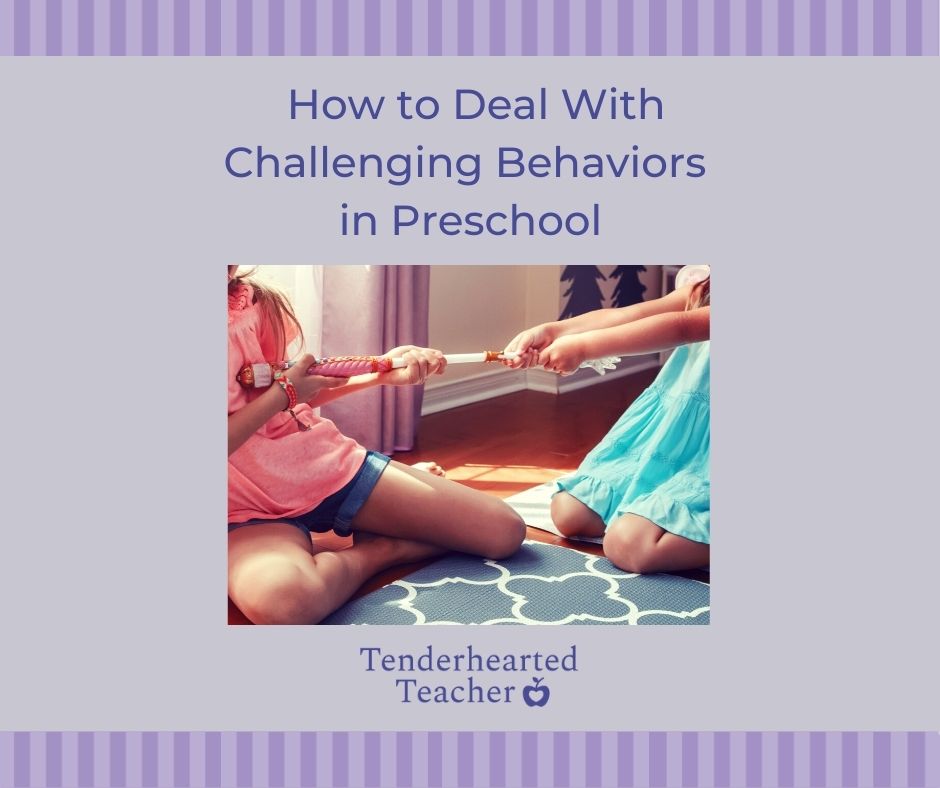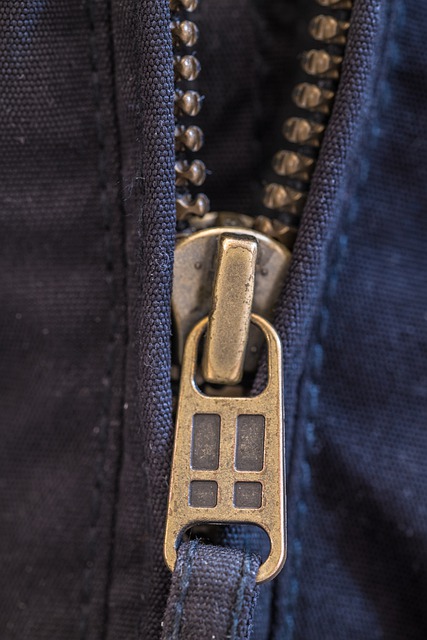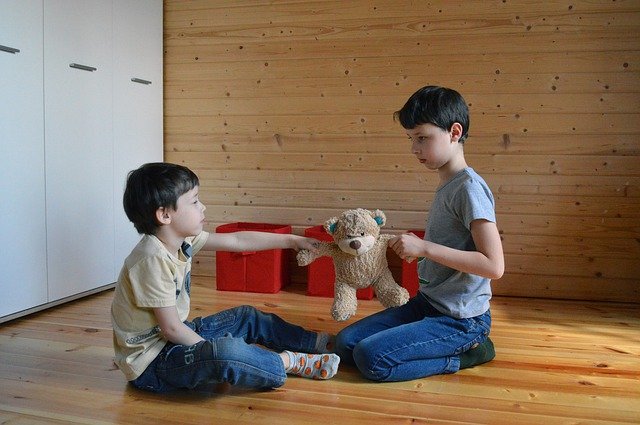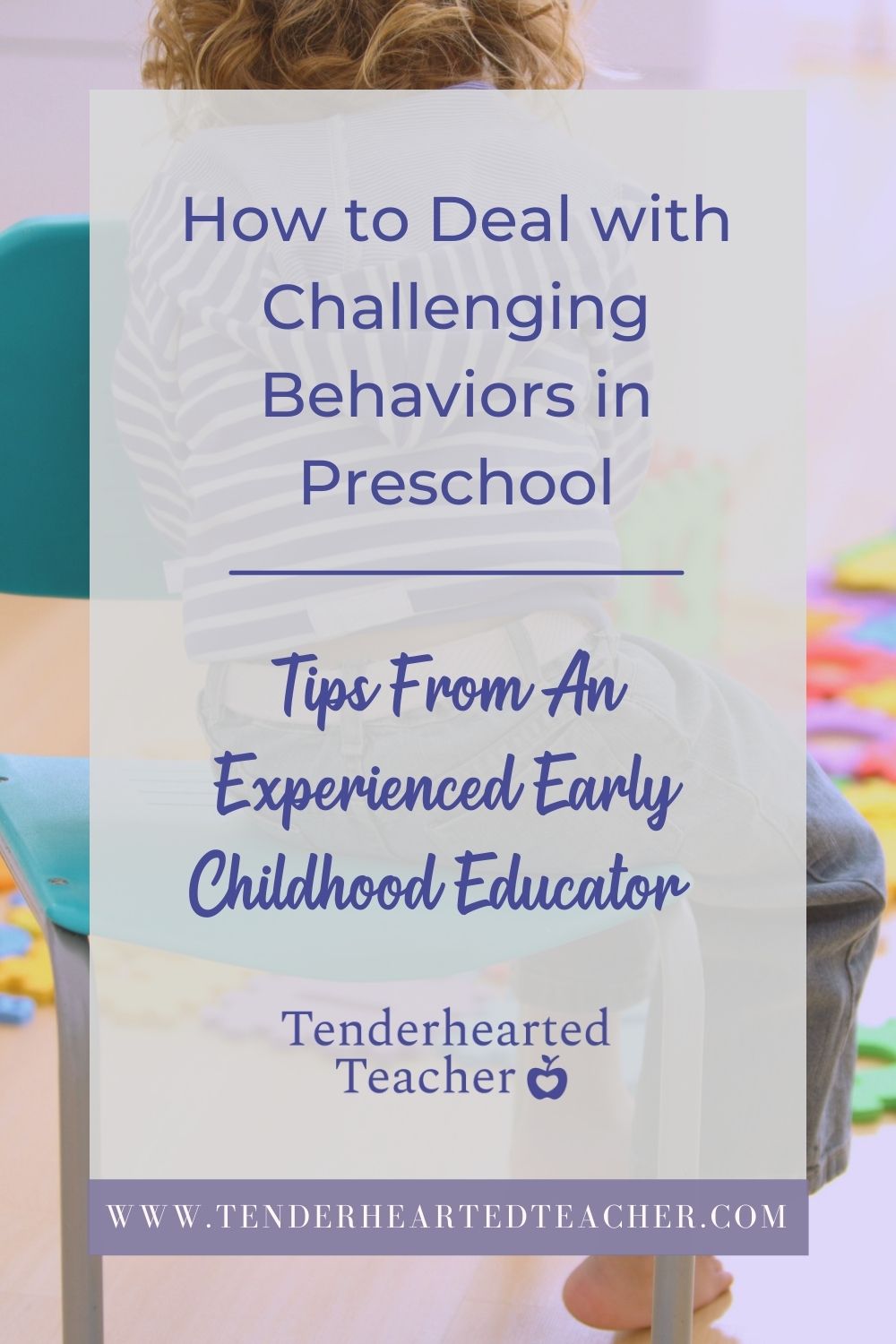
Tips From An Experienced Early Childhood Educator
When I first started teaching I knew I’d have to learn how to deal with challenging behaviors in preschool. In fact, for the majority of my career I’ve taught preschoolers with delays in speech and language. So, I have frequently seen behaviors caused by my students’ inability to communicate their wants or needs. But, how did I actually handle these types of behaviors in my preschool classroom?
I won’t sugarcoat it and I’m sure if you have a toddler or preschooler in your home you know full well that certain behaviors can be triggering for you as a parent or guardian. One of my biggest triggers, for example, is whining. It makes my skin crawl and can make me feel completely discombobulated.
But, the reality is that our preschoolers are not “misbehaving” or “acting out” to purposely get a rise out of us. I put those words in quotes because for me they are truly misnomers. I’ll explain…we can’t expect young children to know how to regulate, handle big emotions, and behave appropriately at all times. (Let’s be real…we can’t even expect that from most adults!) So, let’s start using the phrase “trying to communicate” instead. Each and every action a child takes is their way of communicating with us.
What Are Some Challenging Behaviors In Preschool?
I bet you can rapidly rattle off behaviors you’ve been dealing with at home. But here are some of the most common behaviors I come across in my classroom. I’m sure you may have even observed them yourself.
For example, I might have a student who needs help zipping up their jacket. But, they can’t quite figure out how to ask for my help. So, they break down in the middle of the classroom and start kicking and screaming on the floor. Will it help the situation if I yell at the child and say, “Stop misbehaving right this instant! You’re embarrassing yourself and making a scene!?”
No, it certainly won’t. In fact, that child will most likely become more upset and the situation can escalate.
How about another example? What if I have a student who wants to play with a toy that is being used by someone else. Instead of asking to share, they rip the toy out of their classmate’s hands. Will it help the situation if I rip the toy away from both of them and yell “Since you can’t share, I’m taking this away. Now neither one of you can play with it!?”
You got it! That won’t help either.
So, What Can You Do In These Situations?
Trust me when I tell you that I sometimes cringe thinking about how I’ve handled some behaviors in the past. I won’t always get it right and neither will you. We’re only human. We’re not perfect and we deserve to cut ourselves some slack, too, every now and then.
However, there is a way to approach behavior that can be better for our children and for us as caregivers.
First, we must reiterate that every action a child takes is their way of communicating with us. So, if they are doing something out of the norm, we have to figure out what is provoking them to do it. In one of my behavior management courses in graduate school the professor taught the class that when you observe a behavior it’s important to think about what happened right before the behavior to make it happen.
In addition, the goal is not to punish but to teach. Young children are only beginning to learn how to manage their emotions and regulate their behaviors. So punishing a child for an age-appropriate behavior (like a tantrum) or for something they haven’t learned to do yet (like sharing toys) is not productive. We should be focusing on modeling appropriate behaviors and providing self-regulatory strategies instead.
Challenging Behaviors in Preschool: Example 1

Let’s go back to that zipper scenario. If I jump to the conclusion that this child is throwing a tantrum on the floor to purposely agitate me, I might get aggravated and raise my voice. But, what if I take a moment to consider what happened right before the tantrum? What if I had observed the child trying to zip up their jacket, but noticed they were having some trouble. I hear them let out a whine. Then they try again and again and each time their whines gets louder and louder.
Do I run over and say “What’s your problem? Why are you whining??” Nope! I’d pause to take a moment to reflect as to what caused the behavior. I’d think, “Hmm, this little one is having a tough time and might need some help.”
As an aside, one of the most important things to do while a child is throwing a tantrum is to speak with a calm voice. (This is easier said than done at times, but try it.) So instead of yelling, I’d calmly say, “Wow. You sound really frustrated. It seems like you can’t zip up your jacket.” Then, I’d give the student a choice, “Do you want me to show you how to do it so you can try again on your own? Or would you like for me to help you?”
Challenging Behaviors in Preschool: Example 2

Now, how about the toy sharing situation? If I give myself a moment to pause, I’d probably realize that this child is unable to wait for a turn. Or that they are unable to communicate their desire to join in the play. Therefore, instead of snatching the toy away from the both of them (the exact thing I’m telling them not to do by the way, )I’d take a breath. Then I’d say, “Hmm, Timmy. It looks like you want to play with that toy too. Joey is playing with it now. It can feel frustrating to wait for a turn. Perhaps, we can ask Joey to use it when he’s done or we can ask him to share.”
Side note, if Joey doesn’t feel like sharing, that’s okay too. I’ll write another blog all about sharing one day. But, in the meantime, just know that we can’t expect preschoolers to want to share all of the time. So, if he says no, you can turn to Timmy and calmly say, “Oh, Joey wants to play alone and that’s okay. Is there something else you’d like to play with right now? If not, I can sit with you while you wait.”
In my own experience this scenario usually plays out with Joey giving the toy to Timmy after a few minutes. Or Timmy quickly decides to play with something else before Joey even gives it up.
But, if you do happen to find yourself dealing with an inconsolable Timmy, it’s important to do two things. Let Timmy release his big emotions, while also remaining a calm presence nearby. Tantrums can seem unbearable in the moment, but letting them run their course is critical for a young child’s development. As the adult it’s your job to validate and name the child’s feelings and let them know you’re there if they need you.
Recap: What You Should Do to Deal With Challenging Behaviors
Even though I only gave you two examples of how to deal with challenging behaviors in preschool, you still have some key takeaways that can be helpful in other situations. Here are the main points:
- Every behavior is a form of communication. Take a pause before reacting to the behavior. First, try to determine what the child is trying to communicate and then react.
- Give yourself, and your child, some grace. We all have big emotions from time to time. But, young children are just learning to manage their emotions as well as their reactions to their emotions. So, don’t punish for things that are out of their control. Instead, use these challenging moments as learning experiences to talk to your child about their feelings and their behavior.
- Validate your child’s feelings and help them to name those feelings. If a child learns to label their feelings now in the moment, it can help them to label them in the future. You’ll notice challenging behaviors happen less frequently when a child can effectively name their feelings/emotions and communicate them to their caregivers.
- Do your best to use a calm voice to remind them that you are there for support during and after a big behavior.
Alright, that’s where I’ll end things for now. We can spend days talking about different strategies on how to deal with challenging behaviors in preschool and we will through other blog posts. For example, click here for my post on social-emotional learning! But, at least these tips today can offer a starting point.
Also, information from this post has been included in Twinkl’s Behavioral Management in the Classroom Blog.
Now talk to me! What types of behaviors are you dealing with at home? Do you think these techniques will help you deal with your preschooler’s behaviors? Share your comments or questions below.
SAVE TO PINTEREST




Hi Sally,
You’re doing a great job.
Wish I had this when my Erin was little. She is my middle child though she wasn’t a middle child for nearly 6 years!!
We parent how we were taught and I didn’t have a great teacher. But we made it through.
Thanks for helping me now with my 3 year old grandson. I’ve come a long way. And have learned a lot.
I sooo appreciate your blogs as we ALL have much to learn.
Miss you and school!
Thank you so much. Your comment means a lot to me. We’re all doing the best we can with the info we have at any given moment. So, I really just want to give parents and caregivers some useful resources and strategies so they can be more informed.
Miss you too! Hope you’re enjoying retirement!
Ooh boy, the jacket drama was all too real for the first two weeks my son was in preschool! It was so frustrating, because he knew how to do it, he was just resisting to have some control in the entire getting-ready-for-school situation. Why do we put so much pressure on our little ones when they’re simply unable to communicate the way we do? Thank you for this great post!
Thank you for the great tips! We’re in a huge discovery and independence stage right now and tantrums are constant! It’s easy to get agitated but it’s important to step back and see what’s causing the tantrum!
Absolutely, McKayla! Thank you for your comment.
Thank you for the great information.
You made a good point that it’s important to also consider non-verbal forms of communication as well when it comes to teaching kids. I’d like to know more about preschool teaching strategies for parents because I want to start teaching my child how to read. With the kind of babbling that she’s been doing lately, I think that it’s time for her to learn how to pronounce words.
Hello Sally,
My name is Nicole, and I, too, am a preschool teacher. I currently teach pre-K, but due to the lack of teachers working in our school, I am juggling 3 classes at once. I have my PreK students and our 3K students during school hours, and in the afternoons I have the 2 grades and our afterschool program children. With the mixture of age groups, things can be chaotic for me in the classroom. Unfortunately, the 2 examples you gave in your blog about behavior challenges are minor compared to what I’m currently dealing with daily. I have 2 special needs children in my class, and I have 3 behavior-challenged children as well. My biggest issues are when the children know our classroom rules and our expectations in the classroom, and look at me laughing and continue to run in the classroom despite my better efforts and communication to redirect, and also climb and jump on furniture, even after I’ve redirected in a positive manner reiterating the fact that we keep our feet on the floor where it is safe, and use our running and climbing feet outside on the playground. The fact that they laugh at me and belive it’s a funny game of chase, when I’ve expressed that we’re not playing chase in the classroom we’re cleaning up or whatever the activity is or transition we are in, the continue to do it. I’ve implemented every behavior management resource and technique I have been trained and for 20+ years have used, and I’m running out of options for these few. If you any other suggestions that may help that would be great!
First, I’d like to say welcome to the Tenderhearted Teacher community and for your comment, Nicole. Next, I want to say I’m sorry you’re experiencing this right now in your classroom. Your mixed grade situation is not ideal. Our jobs come with many challenges and dealing with a shortage of staff only exacerbates them or creates new issues. I recognize and commend your effort and thank you for all that you do as an early childhood educator.
Since you’ve been in the classroom for more than 20 years, I’m not sure if I’ll have any new suggestions that you haven’t already tried. But, I’ll certainly share some of what has worked with me in the past. For overall classroom management strategies, I rely heavily on the common ones like visual schedules, songs and games for transitions, role-playing/modeling, modifying/rearranging classroom furniture to limit running/climbing, and implementing movement/exercise throughout the day, i.e dance, yoga, stretching, etc.
When it comes to addressing individual behaviors, the first thing I like to do is take ABC (Antecedent, Behavior, Consequence) data for about a week or two. And yes, this can be very hard to do when you don’t have support staff in your room to help you with this. To make things simpler, I use a modified checklist to jot things down more quickly and then I review it at the end of the day. This helps me to easily observe and record info to identify patterns and potential triggers.
Once I get a better understanding about why the behavior is occurring, I’ll try related behavior management strategies until I find something that works. So, for example, if I have a child who is struggling with transitions, I might use a personal visual schedule or a social story to help them, or assign them a transition buddy. If a child is having a hard time with clean up, I’ll turn it into a ‘beat the clock’ game. “I bet you can’t clean up the block center before this song ends.” And when they do it they can earn a reward. And for a child who is attention/connection seeking, I use a strategy called “MOST” (my own special time.) I often find kids who laugh and run around the room are seeking attention from the teacher (whether it’s good or bad.) So, I’ll implement a 5-minute period of the day in which they receive one-to-one time with me. During this time, they can pick a preferred activity of their choice, i.e. read a book, play a game, tell me a story, etc. This individualized interaction is non-contingent meaning it cannot be earned as a reward or taken away as a punishment. This may seem daunting to implement at first, but it does work well to reduce those negative behaviors. Plus the time you spend with them is saved once you no longer have to interrupt your day multiple times to address problem behaviors, etc.
If all else fails, I would confer with your school’s child study team and behaviorist to see what their recommendations are and ask them to establish a behavior intervention plan.